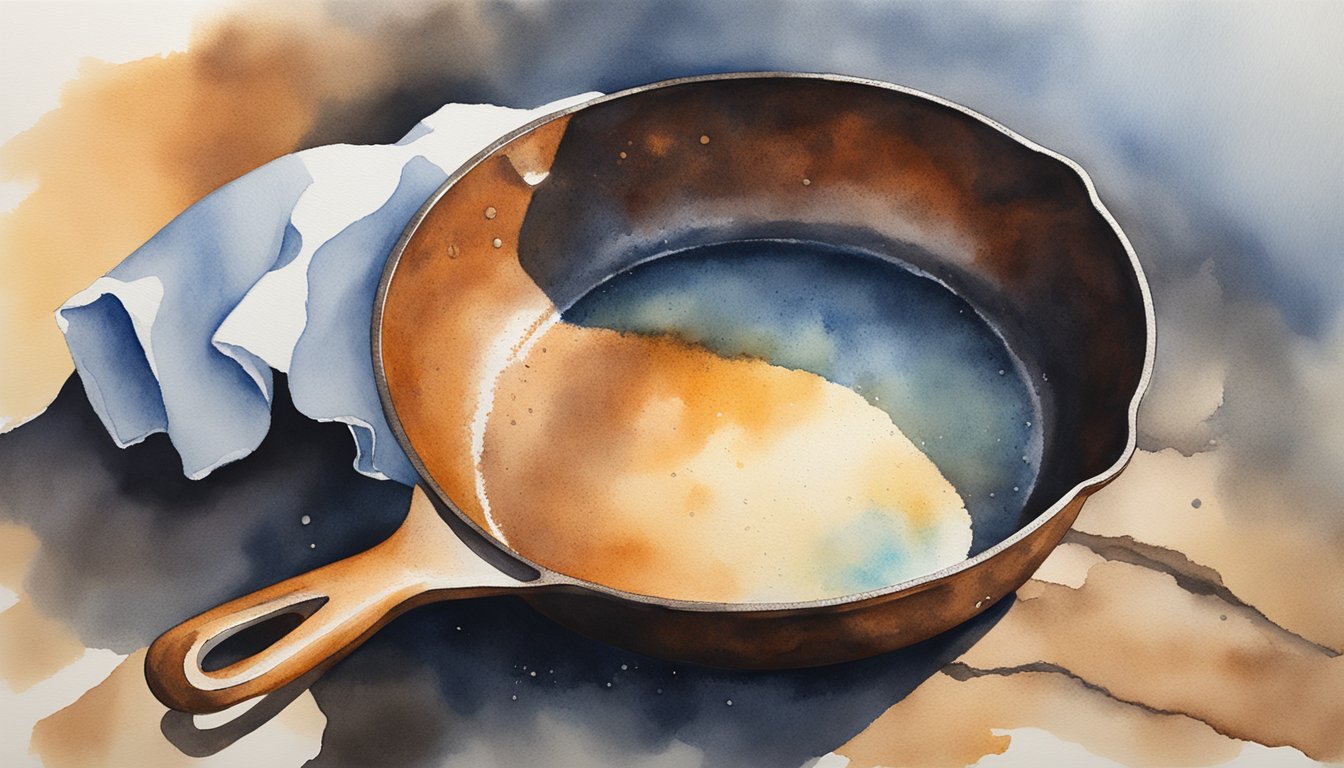Call us: (631) 270 9692
Many of us treasure our cast iron cookware for its durability and even heat distribution. However, a rusty cast iron skillet can be a headache. The good news is that cleaning a rusty cast iron skillet is straightforward and manageable with the right steps.
We start by using steel wool to scrub away the rust, revealing the bare metal beneath. After scrubbing, it’s essential to wash the skillet thoroughly with mild dish soap and warm water to remove any remaining rust particles. Once dry, we coat the skillet with a thin layer of oil and heat it to re-season the surface, ensuring the cast iron is protected and ready for future use.
Maintaining our cast iron cookware can prolong its life and improve its performance. By following these simple cleaning steps, we can keep our favorite pans in excellent condition. For detailed guidance, check out this comprehensive guide on how to clean a rusty cast-iron skillet.
Assessing and Preparing Your Cast Iron Skillet
Before we start cleaning, we need to check the rust levels on the cast iron skillet and gather all the necessary materials.
Identifying Rust Levels
First, we should look at the skillet to see how much rust there is. Rust can range from small spots to larger, more severe patches. If the rust covers just a few areas, it will be easier to clean.
For heavily rusted skillets, we might need more time and effort. Light rust can often be fixed with basic materials like steel wool and a little soap. For heavier rust, we might need stronger abrasives like the Lodge Rust Eraser. Knowing the rust level helps us figure out the best cleaning method.
Gathering Required Materials
To clean a rusty cast iron skillet, we need several items. Basic materials include steel wool for scrubbing and mild dish soap for washing. Warm water helps loosen rust.
For tougher rust, abrasives like the Lodge Rust Eraser or aluminum foil work well. We also need paper towels to dry the skillet and cooking oil to re-season it. With these materials ready, we are well-prepared to tackle the rust and restore our cast iron skillet to good condition.
For vinegar and baking soda users, combining some baking soda and water to make a paste can help remove stubborn spots. This mix will break down tough rust and make scrubbing easier.
Having all these items on hand makes the cleaning process smoother and more effective.
Step-by-Step Cleaning Process
Cleaning a rusty cast iron skillet involves removing the rust, washing and drying the skillet, and re-seasoning it to restore its cooking surface.
Removing Rust
To start, we need to remove the rust. First, create a mixture of equal parts vinegar and water. Soak the skillet in this solution for up to an hour. If the rust is minor, we should be able to scrub it off sooner.
Use a scouring pad or steel wool to scrub the skillet. Apply consistent pressure and use some elbow grease. If there are stubborn rust spots, sprinkle kosher salt on them to aid in the scrubbing process. Check the skillet periodically during the soak to prevent over-exposure, which can damage the metal.
Washing and Drying
Once the rust is removed, it’s time to wash the skillet with mild dish soap and hot water. Even though soap is usually avoided with cast iron, it’s necessary this time to ensure all the vinegar and rust are gone. Rinse thoroughly with warm water.
After washing, dry the skillet immediately with a clean cloth or paper towels. Leaving any water on cast iron can cause new rust to form. To ensure the skillet is completely dry, place it on a stove burner over low heat for a few minutes.
Re-Seasoning the Skillet
Lastly, we need to re-season the skillet to restore its non-stick surface. Preheat the oven to 375 degrees. Rub a small amount of vegetable oil or shortening over the entire surface of the skillet, including the handles and the bottom. Wipe out any excess oil with a clean paper towel.
Place the skillet upside down on the oven’s middle rack and bake it for one hour. This process bonds the oil to the iron, creating a protective coating. Let the skillet cool completely in the oven before using or storing it.
Cleaning a rusty cast iron skillet properly ensures it remains in good condition for years to come.





